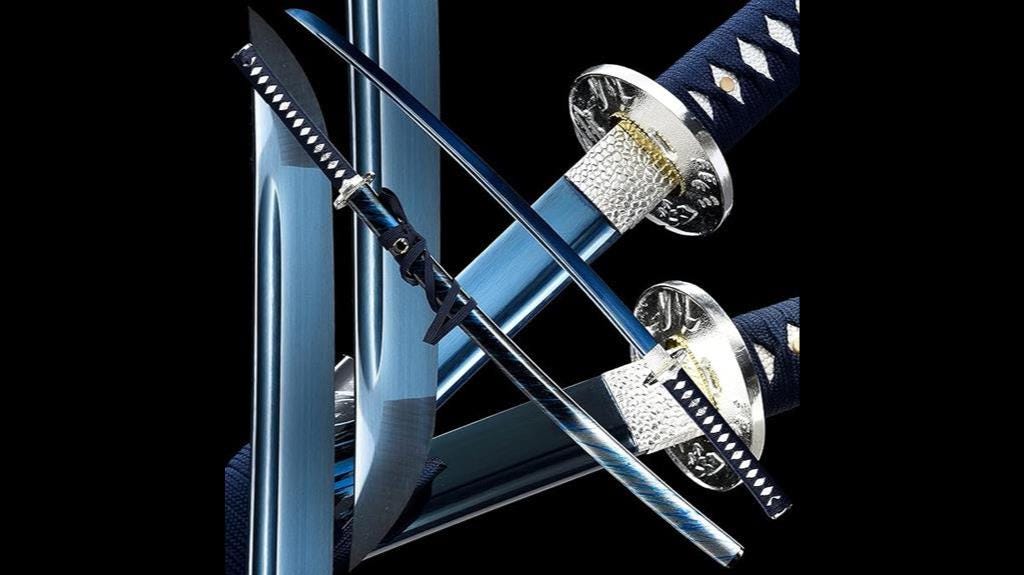Importance of Katana in Martial Arts
Asenqua Tech is reader-supported. When you buy through links on our site, we may earn an affiliate commission.
Importance of Katana in Martial Arts
The katana was the pride of the samurai during battle, and it is still used in traditional martial arts today. An average katana’s blade measures around 27 inches long, while its handle measures about 11 to 12 inches.
Steel is traditionally folded into layers to make katana blades with a flexible body that has a hard cutting edge. Modern steel-making techniques have made it possible to make katana from mono steel, which is not folded but tempered to achieve a hard cutting edge and flexible body.
All these qualities make an uprank martial arts training necessary to achieve agility and precision with different moves. This article will explain why katana is important for those considering learning martial arts.
Role of Katana in Modern Martial Arts
Many martial arts utilize katana training, including aikido, taijutsu, battojutsu, iaidō, kenjutsu, kendo, ninjutsu, and Tenshin Shoden Katori Shinto-ryu. Despite this, katana used for martial arts are usually blunt-edged and wooden to reduce the risks of injury.
The most commonly used Japanese sword is usually Iaitos or wooden bokkens. A practitioner uses a sharp katana only when he or she practices cutting a bamboo or tatami straw post during tameshigiri (blade testing).
Due to its curved shape, the katana is also highly effective in mounted and on-foot warfare due to its slashing and thrusting abilities.
Katanas are characterized by their unique materials. Traditionally, katanas are made from tamahagane steel, Japanese steel produced in a clay tatara furnace by heating iron sand and charcoal.
Katana: A true Martial Art’s Inspiration
As far as origins are concerned, the katana can be traced back to the Heian period (794 to 1185 AD), during which Japan engaged in cultural flourishing and political transition. Back then, samurai, the military nobility, preferred the tachi as a weapon of choice.
Mounted combat also influenced the design of the tachi, which has a more pronounced curve and edge that points downwards when worn.
It became apparent, however, that a more versatile, easily drawn weapon was needed during the late Heian period as warfare shifted from open to close-quarters combat. From the earlier tachi came the katana, a unique creation. This weapon was effective for cutting and thrusting because of its single-edged, curved blade and circular or squared guard.
Using the blade this way, samurais could draw and strike the enemy in one fluid motion, which became central to the martial art discipline known as Iaido.
What Katanas are used in Martial Arts
Nowadays, imitation/decorative katana are widely available worldwide, and they are commonly called ‘wall hangers’ since all they are good for is adorning walls. Most wall-hanger swords are poorly made and will break when used for martial arts practice.
Despite their sharpness and appearance, most wall hangers are made of stainless steel and are extremely brittle, which makes them likely to break when used to cut. Katanas forged by hand are very expensive.
The good news is that some excellent katana for sale are available today at affordable prices.
Several excellent, affordable katanas that look great and can still be used for tameshigiri are available today.
How to Keep a Katana
Having a katana comes with some responsibilities and considerations. A katana may suffer irreparable damage if mishandled during storage or maintenance. You should store the blade horizontally in its sheath, with its edge facing upward and the curve down. If not cleaned off, the blade will quickly rust due to moisture residue from the user
‘s hands.
Keeping the blade well-oiled, powdered, and polished makes it extremely important. The traditionally used oil is Chji (99% mineral oil with 1% clove oil for fragrance).
For the same reason, if a katana needs to be stored for an extended period, it must be inspected frequently and aired out as needed to prevent rust and mold from developing (mold may feed off salts in the oil used to polish the blade).
Conclusion
Katanas have a spiritual significance in martial arts, which is why they can also be used to honor someone in the martial arts. So, in conclusion, if you’re interested in martial arts training, you can’t neglect the importance of katana.


![[Fixed] iPhone 7 Camera and Flash Not Working After Drop?](https://asenquavc.com/wp-content/uploads/2022/03/pongracz-noemi-qaoo_33vmte-uns-768x512.jpg)



